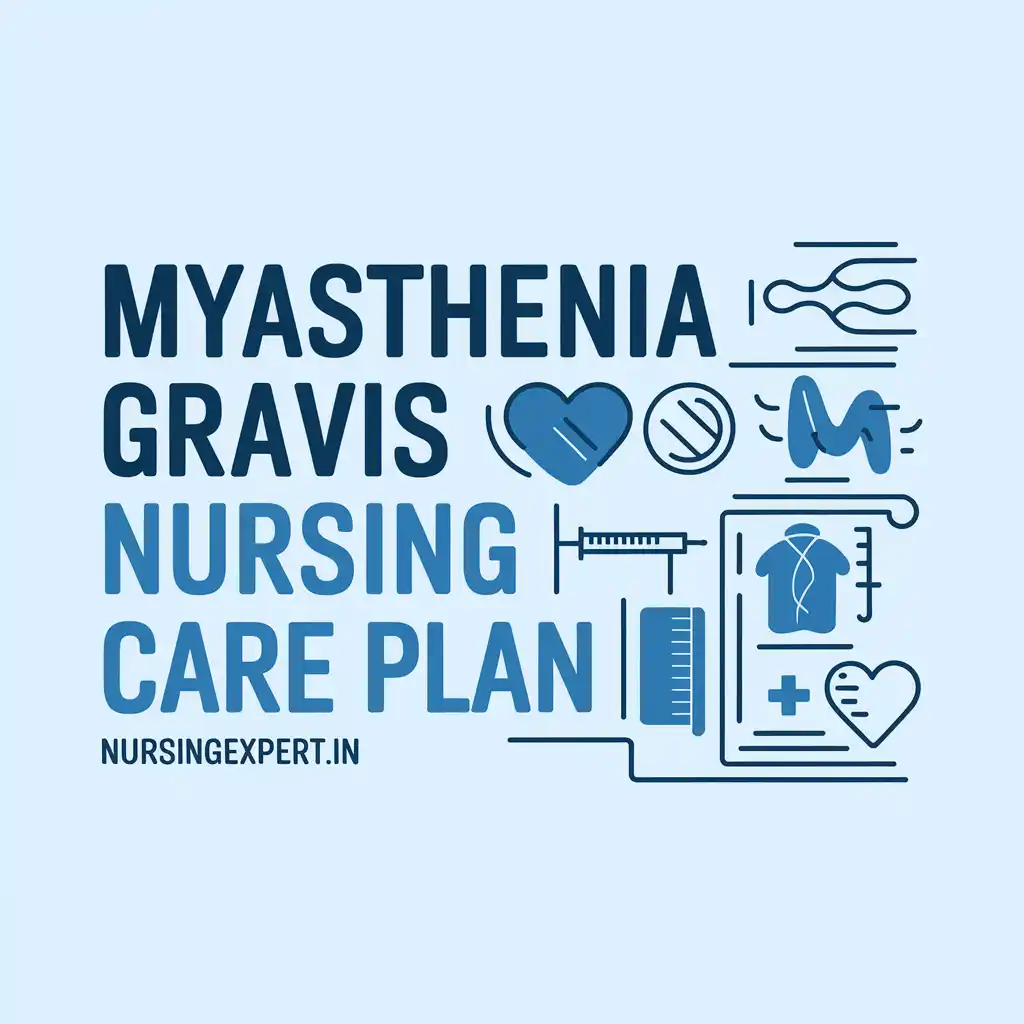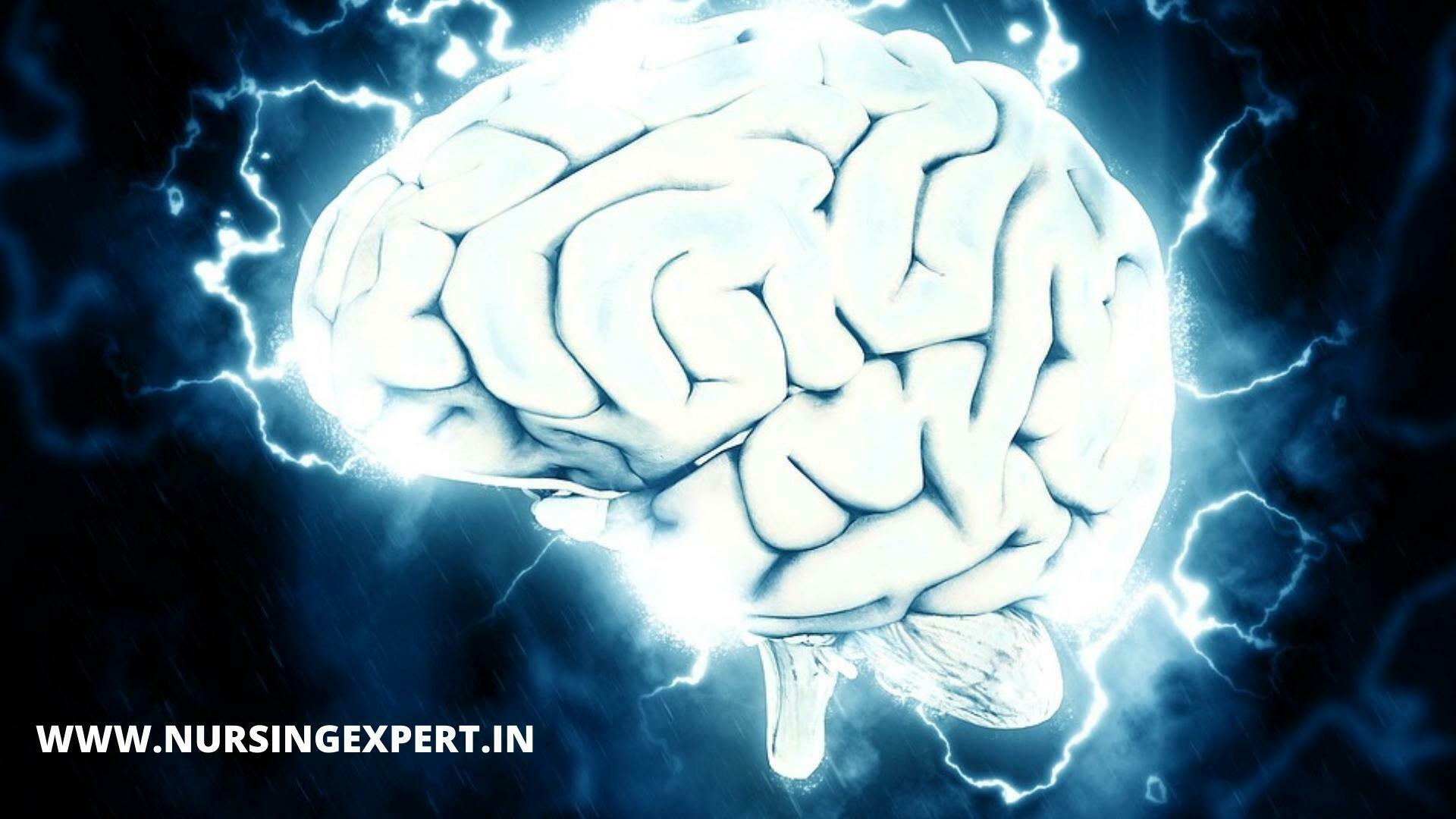Introduction
Myasthenia Gravis (MG) is a chronic autoimmune disorder affecting the neuromuscular junction. In MG, antibodies disrupt the communication between nerves and muscles, causing fluctuating muscle weakness and fatigue. Nursing care plans provide structure and direction to ensure patients receive individualized, evidence-based care. This guide explains how to develop and implement a Myasthenia Gravis Nursing Care Plan that focuses on enhancing patient safety, promoting optimal function, and improving quality of life.
Thank you for reading this post, don't forget to subscribe!
Understanding Myasthenia Gravis
Pathophysiology:
MG occurs when the immune system produces antibodies that block or destroy acetylcholine receptors at the neuromuscular junction. This interference impairs the transmission of nerve impulses to muscles, resulting in weakness.
Key Features:
- Muscle Weakness: Typically affects ocular, facial, and limb muscles.
- Fluctuating Symptoms: Muscle strength may vary throughout the day.
- Fatigue: Increased weakness with prolonged activity.
- Respiratory Involvement: In severe cases, the diaphragm and breathing muscles may be affected.
Types of MG:
- Ocular Myasthenia Gravis: Affects the muscles controlling the eyes and eyelids.
- Generalized Myasthenia Gravis: Involves multiple muscle groups across the body.
Understanding these core aspects helps nurses develop a care plan tailored to the unique challenges of MG.


Role of Nurses in Myasthenia Gravis Nursing Care Plan
Nurses are essential to the multidisciplinary management of MG. Their responsibilities include:
- Holistic Care: Address both physical and emotional needs.
- Collaboration: Work with neurologists, respiratory therapists, and rehabilitation specialists.
- Patient Advocacy: Educate patients and families, ensuring informed decisions and adherence to treatment plans.
- Monitoring and Evaluation: Continuously assess the patient’s condition and adjust care interventions accordingly.
Nurses ensure that every patient receives personalized care, which is vital for managing fluctuating symptoms and preventing complications.
Nursing Assessment and Diagnosis
Comprehensive Assessment
Nurses begin by performing thorough assessments in several key areas:
- Physical Assessment:
- Muscle Strength: Evaluate strength in affected and unaffected muscle groups.
- Fatigue Level: Document changes in energy levels during daily activities.
- Respiratory Function: Monitor for signs of respiratory compromise.
- Cranial Nerve Function: Assess ocular movements, facial muscle strength, and swallowing ability.
- Psychosocial Assessment:
- Emotional Status: Identify signs of anxiety or depression linked to chronic illness.
- Coping Mechanisms: Evaluate the patient’s ability to manage stress and adapt to their condition.
- Support Systems: Determine the availability of family and community support.
- Cognitive Assessment:
- Attention and Concentration: Test for any cognitive impairment that may affect treatment adherence.
Common Nursing Diagnoses
Based on the assessment, common nursing diagnoses for MG include:
- Impaired Physical Mobility: Due to muscle weakness and fatigue.
- Ineffective Airway Clearance: Related to respiratory muscle weakness.
- Fatigue: Chronic exhaustion that affects daily living.
- Risk for Aspiration: Due to dysphagia and reduced swallowing ability.
- Ineffective Coping: Emotional distress associated with a chronic condition.
- Knowledge Deficit: Related to disease management and treatment options.
These diagnoses guide the planning of targeted interventions and help nurses set clear, measurable goals.
Developing a Myasthenia Gravis Nursing Care Plan
Creating an effective nursing care plan involves establishing clear goals, planning interventions, and setting evaluation criteria. The following sections outline the key components.
Setting Goals and Expected Outcomes
Nurses collaborate with patients to set achievable goals. For example:
- Enhance Mobility: The patient will demonstrate improved muscle strength and reduced fatigue.
- Optimize Respiratory Function: The patient will maintain adequate ventilation and clear airways.
- Improve Coping Skills: The patient will use stress-reduction techniques effectively.
- Increase Knowledge: The patient will verbalize an understanding of MG management.
Planning Interventions
Interventions should be evidence-based and tailored to each patient’s needs. They may include:
- Medication Administration: Ensure the timely administration of anticholinesterase agents and immunosuppressants.
- Respiratory Support: Monitor oxygen saturation and respiratory rate; provide oxygen therapy as needed.
- Physical Therapy: Collaborate with physiotherapists to develop an exercise program that strengthens muscles without overexertion.
- Patient Education: Offer clear explanations about the disease, treatment protocols, and lifestyle modifications.
- Emotional Support: Facilitate counseling or support group referrals to help manage the emotional burden of chronic illness.
Setting Evaluation Criteria
Continuous evaluation is essential. Nurses monitor progress using:
- Symptom Logs: Track fluctuations in muscle strength and fatigue.
- Respiratory Assessments: Regular monitoring of breathing patterns and oxygen levels.
- Patient Feedback: Assess improvements in daily functioning and emotional well-being.
- Documentation: Record all assessments and interventions to adjust the plan as needed.
Sample Myasthenia Gravis Nursing Care Plan
The sample care plan below is presented in a seven-column table format. It provides specific nursing diagnoses, goals, interventions, rationales, evaluation methods, timelines, and additional notes.
| Nursing Diagnosis | Goal/Expected Outcome | Interventions | Rationale | Evaluation | Timeline | Notes |
|---|---|---|---|---|---|---|
| Impaired Physical Mobility | Patient will improve muscle strength and mobility. | 1. Administer prescribed anticholinesterase medications. 2. Coordinate with physical therapy for tailored exercises. | Medications improve neuromuscular transmission; exercise builds muscle strength. | Improved movement and reduced fatigue during activities. | 2-4 weeks | Adjust exercise intensity based on patient tolerance. |
| Ineffective Airway Clearance | Patient will maintain clear airways and effective breathing. | 1. Monitor respiratory rate and oxygen saturation. 2. Encourage deep breathing and coughing exercises. | These measures promote lung expansion and reduce the risk of respiratory complications. | Normal respiratory rate and oxygen levels observed. | Ongoing | Use incentive spirometry as needed. |
| Fatigue | Patient will demonstrate decreased fatigue levels. | 1. Teach energy conservation techniques. 2. Schedule rest periods between activities. | Energy conservation helps manage fatigue and prevents overexertion. | Patient reports lower fatigue and improved daily activity. | 1-2 weeks | Keep a fatigue log to track daily energy levels. |
| Risk for Aspiration | Patient will maintain safe swallowing and avoid aspiration. | 1. Assess swallowing ability regularly. 2. Provide small, frequent meals and monitor for signs of aspiration. | Regular assessment reduces the risk of aspiration and associated complications. | No signs of choking or aspiration observed. | Ongoing | Consult speech therapy if swallowing difficulties persist. |
| Ineffective Coping | Patient will utilize effective stress management strategies. | 1. Provide counseling referrals and stress management education. 2. Encourage participation in support groups. | Counseling and support groups help patients manage emotional stress. | Patient verbalizes improved coping strategies. | 1 month | Document changes in emotional well-being. |
| Knowledge Deficit | Patient will demonstrate understanding of MG and its management. | 1. Educate patient on MG, medications, and lifestyle modifications. 2. Provide written educational materials. | Improved understanding enhances treatment adherence and self-management. | Patient explains disease management steps during follow-up. | 1-2 weeks | Reinforce education at subsequent visits. |
| Impaired Self-Care | Patient will perform self-care activities with increased independence. | 1. Train on the use of adaptive equipment (e.g., assistive devices for mobility). 2. Collaborate with occupational therapy for self-care training. | Promotes independence and improves quality of life. | Increased ability to perform daily activities independently. | 3-4 weeks | Schedule periodic reviews to reinforce techniques. |
This sample care plan can be adapted based on individual patient needs and clinical judgment.
Download Myasthenia Gravis Nursing Care Plan PDF
For quick reference and ease of use in clinical settings, download the complete Myasthenia Gravis Nursing Care Plan PDF by clicking the link below:
Download Myasthenia Gravis Nursing Care Plan PDF
Patient Education and Support
Lifestyle Adjustments
Patients benefit from lifestyle modifications that support overall health. Nurses should advise on:
- Balanced Diet: Promote foods that support muscle health and overall energy.
- Regular, Moderate Exercise: Encourage activities that maintain strength without causing excessive fatigue.
- Stress Management: Teach techniques like deep breathing and mindfulness.
Community Resources
Connecting patients to external support enhances care:
- Local Support Groups: Recommend groups where patients share experiences.
- National Organizations: Provide information about the Myasthenia Gravis Foundation of America and other relevant bodies.
When to Seek Help
Educate patients about signs that require immediate attention:
- Increased Difficulty Breathing: May indicate respiratory compromise.
- Worsening Swallowing Difficulties: Can increase the risk of aspiration.
- Severe Fatigue or Muscle Weakness: Might signal a crisis requiring prompt medical evaluation.
Medication Adherence and Self-Care
Understanding treatment is crucial:
- Medication Education: Explain the purpose, dosage, and timing of anticholinesterase agents and immunosuppressants.
- Symptom Monitoring: Teach patients how to track symptoms and identify exacerbation triggers.
Emotional and Psychological Support
Managing a chronic illness like MG can be emotionally challenging. Nurses should:
- Offer Counseling Resources: Connect patients with mental health professionals.
- Encourage Peer Support: Facilitate involvement in support groups for shared experiences and coping strategies.
Evaluation and Monitoring
Regular evaluation ensures the care plan remains effective:
- Outcome Tracking: Use patient logs, symptom diaries, and regular assessments.
- Adjust Interventions: Modify the plan based on patient progress and feedback.
- Documentation: Keep detailed records to facilitate coordinated care among all team members.
Conclusion
A well-structured nursing care plan for Myasthenia Gravis is vital to manage symptoms and improve patient outcomes. This comprehensive guide provides evidence-based assessments, clear interventions, and continuous evaluation methods. By following this plan, nurses can offer individualized care that enhances both physical and emotional well-being. Empowering patients through education and support is essential in the journey toward better health and improved quality of life.
Frequently Asked Questions (FAQs)
- What is Myasthenia Gravis?
Myasthenia Gravis is a chronic autoimmune disorder where antibodies block or destroy acetylcholine receptors, leading to muscle weakness and fatigue. - How does the nursing care plan help MG patients?
The care plan organizes assessments, sets clear goals, and outlines targeted interventions to manage symptoms and improve overall quality of life. - What are common symptoms of Myasthenia Gravis?
Common symptoms include fluctuating muscle weakness, fatigue, difficulty swallowing, and in severe cases, respiratory difficulties. - How can nurses prevent complications in MG patients?
Nurses monitor respiratory function, administer medications timely, and educate patients about energy conservation and safe swallowing techniques to minimize risks. - Why is patient education important in MG care?
Education empowers patients to understand their condition, adhere to medications, and manage symptoms effectively, leading to improved self-care and quality of life.
References and Sources
- Myasthenia Gravis Foundation of America. “Understanding Myasthenia Gravis.” https://myasthenia.org/
- Mayo Clinic. “Myasthenia Gravis.” https://www.mayoclinic.org/diseases-conditions/myasthenia-gravis/
- MedlinePlus. “Myasthenia Gravis.” https://medlineplus.gov/myastheniagravis.html
- Healthline. “Myasthenia Gravis Overview.” https://www.healthline.com/health/myasthenia-gravis


